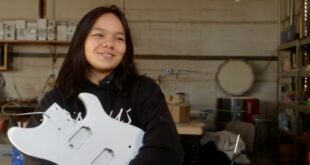Fine or Graphic Arts
First of all, there are two main areas of visual art. One is fine arts; the other is graphic arts.
• Fine arts allows for more freedom of personal expression in various ways, subjects, and mediums.
• Graphic arts requires the artist to be more specific to communicate an idea, present a product, give information in the most concise way possible. Graphic art skills can be used in many different areas of interest—such as Textiles, Package Design, Web Design, Advertising (Publishing or Film), Motion Graphics, etc. There may be limits on mediums of expression depending on which way you go. It has always baffled me because graphic artists don’t always make good fine artists, and fine artists don’t always make good graphic artists. Yet, there are the same principles of knowledge applied in fine and graphic arts.
Principles of Knowledge
Drawing, design, and composition skills are needed.
• Drawing is simply an ability to use lines or tones to depict an image seen or imagined onto a flat two-dimensional surface.
• Design is the process of planning and structuring or composing the drawing to achieve a desired look or statement being made. Keep in mind that the drawing/designing process is a means of discovery long before completion is realized.
• Good composition is important to learn. It’s organizing elements to create a unified, balanced look that should draw the viewer into the art. Understanding color, value, and lighting help to pull all the elements together and aids in setting the artist’s mood.
• Color is a complete topic in itself; therefore, I won’t speak to that except to say there are six ways to utilize color to get the desired look. Full palette, Orderly, Triadic, Complementary, Analogous, and Monochromatic.
• Value in art is simply the range of lights and darks to create a sense of space, dimensionality, and moods.
• Lighting also aids to create mood and dimensionality, but also form and drama. It can assist in composition and design. Color, value, and lighting are interchangeable when well understood to capture a final look that is pleasing to the viewer. Even if one is content and enjoys art as an amateur, the benefits of knowing the principles of what makes good art helps to improve one’s skillset and quality of art produced.
Taking the Professional Route
If there is a desire to enter the field professionally, then schooling is recommended to be proficient enough to compete and thrive in the market. These days a Bachelor’s or Master’s degree may be required for hiring. Once upon a time, a strong portfolio alone could get you in the door. The added benefit of good schooling is the emphasis on a professional portfolio. The beauty of the online world is that we can send someone to a website or mobile device to see our work and not need to carry our actual work anymore.
A portfolio of your work is a must if one seeks a career in the graphic arts industry. What makes for a good body of work to present professionally is adherence to the principles of art mentioned above; drawing, design, composition, color, etc. This includes the consistency in the look and quality of the artwork. Always weed out the weakest pieces as newer and stronger works are developed. About 15 to 20 strong, consistent, well laid out pieces of art should suffice, giving someone an overview of your ability.
The Tools Needed
The basic principles of art utilizing traditional tools, i.e., hand drawing with pencil and paper or paint and brush, are still important to learn. Still, the industry does require a knowledge of digital tools to fulfill the job. Knowledge of things like Adobe Photoshop, Illustrator, InDesign, a Mac computer, Wacom tablet or Cintiq, Procreate, etc., depending on where you work are required. Once you learn one digital medium, the others are somewhat similar in format. Even this generation of fine artists is starting to use digital tools as a medium of choice. The beauty of the digital platform is the ability to make changes. Once upon a time, it was cut and paste or repaint. That’s easier to do digitally than on the original art.
The Disciplines Involved
Certain character traits come with being an artist.
• Focus of attention on a task for long periods of time is one. The patience of staying the course with the potential of delayed gratification until a look or quality is achieved. There may be times you’re able to capture what you want right away, but they are rare. As talented as we are, most of us must draw and redraw or push around ideas, designs, or paint before getting what we imagined in the first place. Not to mention the research involved to aid in pulling it all together.
• An eye for details is an important balancing act. Not so much in information but visual application. Knowing what to put in or what to leave out. Knowing when to use a certain look, be it lines or tones, type of palette, opaques or washes, text and fonts, etc.
• Raising the bar continually of what you can achieve, and willingness to push your creative level. Like all areas of disciplines, there should be a desire to add to our learning. Expanding our knowledge and talent means trying new approaches or mediums for growth.
• Time discipline is a must in creativity. Both putting in the time, amateur or otherwise, and meeting restraints if you are a professional with the pressure of deadlines. Unfortunately, there is rarely enough time allotted to complete an art project by the set deadlines. This is generally because of the pipeline process of alteration that often happens to meet a client’s vision. Therefore, the discipline to get to the task and maintain the course, regardless of hours put in, is required with no loss of quality in the art.
Much more can be said on what’s involved in becoming a visual artist. But hopefully, this gives you a general overview. As I said at the beginning, God is the giver of the gift. Therefore, He will reveal His intent on what and how you are to use the gift—in your heart and mind, through others’ comments, and providential revelations. Enjoy the discovery.
If you enjoyed this, you may like, Restorative Art.
Donald Towns writes from Southern California.
© 2017 - 2024 ASA. All rights reserved. Click here for content usage information.



